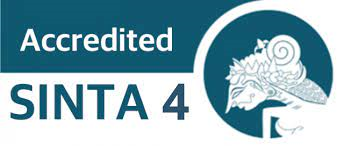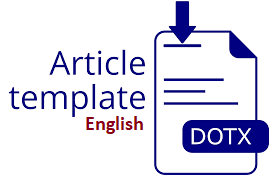Analisis Kualitas Jaringan Internet 4G Menggunakan Metode Quality of Service
DOI:
https://doi.org/10.30865/klik.v3i6.897Keywords:
Delay; Jitter; Packet Loss; QoS; ThroughputAbstract
This study aims to evaluate the quality of the 4G internet network in Tuah Madani District using the Quality of Service (QoS) method which involves throughput, packet loss, delay, and jitter parameters. Due to the high population level, the Tuah Madani sub-district has a densely populated area with a significant population. This causes the need for high internet services as well. The high population density can affect the quality of the network, where the density of the population and the large number of buildings can cause network performance to be less than optimal. The purpose of this study is to provide comprehensive information about the quality of the 4G internet network in Tuah Madani District and provide recommendations to the public to choose the best provider. Analysis of the quality of the 4G network was carried out in three urban villages with the largest population, namely West Sidomulyo Village, Tuah Karya Village, and Sialang Munggu Village. The results of the study in West Sidomulyo Village showed that Smartfren was the best provider with an index value of 4 and received the "Very Good" category. The results of the study in the Tuah Karya Village showed that Telkomsel was the best provider with an index value of 4 and received the "Very Good" category. The results of the study in the Sialang Munggu Village showed that Smartfren was the best provider in the Sialang Munggu Village with an index value of 4 and received the "Very Good" category
Downloads
References
Y. Ananda and A. Prasetyo, “Jurnal Elektro dan Telkomunikasi PENGUKURAN KUALITAS JARINGAN INTERNET DENGAN SINYAL 4G LTE OPERATOR TELKOMSEL DI JALAN IMAM BONJOL KOTA MEDAN DENGAN METODE QUALITY OF SERVICE (QoS),” 2022.
Asosiasi Penyelenggara Jasa Internet Indonesia, “Profil Internet Indonesia 2022,” Jun. 2022. [Online]. Available: https://apjii.or.id/gudang-data/hasil-survei
T. Ernawati and B. D. Pratama, “Comparative Analysis of 4G Network Internet Data Connectivity Based on Quality of Service (QoS) Method (Case Study West Bandung Regency Tourism Area),” in IOP Conference Series: Materials Science and Engineering, IOP Publishing Ltd, Aug. 2020. doi: 10.1088/1757-899X/879/1/012017.
A. Sugiharto and I. Alfi, “Analisa Performa Jaringan 4G LTE Berbagai Provider Seluler di Area Kota Yogyakarta Analysis of 4G LTE Network Performance of Cellular Providers In Yogyakarta City Area,” Prosiding Seminar Nasional Unimus, vol. 1, 2018, [Online]. Available: www.smartfren.com
R. A. Maulana, H. Walidainy, M. Irhamsyah, Fathurrahman, and Akhyar, “Analisis Quality of Service (QoS) Jaringan Internet Pada Website e-Learning Universitas Syiah Kuala Berbasis Wireshark,” 2021.
P. B. Statistik, “KECAMATAN TUAHMADANI DALAM ANGKA 2022 BADAN PUSAT STATISTIK KOTA PEKANBARU,” Kota Pekanbaru, 2022.
R. A. Saputra, E. Budiman, M. Taruk, and H. J. Setyadi, “Analisis Kualitas Teknologi 4G Terhadap Varian Internet Service Provider (Isp) Di Kota Samarinda Menggunkan Standarisasi Lirneasia,” Prosiding Seminar Ilmu Komputer dan Teknologi Informasi, vol. 3, no. 1, 2018.
M. Hasbi and N. R. Saputra, “ANALISIS QUALITY OF SERVICE (QOS) JARINGAN INTERNET KANTOR PUSAT KING BUKOPIN DENGAN MENGGUNAKAN WIRESHARK,” 2021. [Online]. Available: https://jurnal.umj.ac.id/index.php/just-it/index
M. Purwahid and J. Triloka, “Analisis Quality of Service (QOS) Jaringan Internet Untuk Mendukung Rencana Strategis Infrastruktur Jaringan Komputer Di SMK N I Sukadana,” 2019.
E. B. Wagiu, A. Butar-Butar, and J. I. Sihotang, “Analisis QoS (Quality of Service) pada Jaringan Internet (Studi Kasus: Universitas Advent Indonesia),” 2019.
H. Zikri and I. Iskandar, “Analisis Kualitas Jaringan Internet Kampus Universitas Islam Negeri Sultan Syarif Kasim Riau Menerapkan Metode Quality of Service(QoS),” Jurnal Riset Komputer), vol. 9, no. 5, pp. 2407–389, 2022, doi: 10.30865/jurikom.v9i5.4930.
Y. W. Pusvita and Y. Huda, “ANALISIS KUALITAS LAYANAN JARINGAN INTERNET WIFI.ID MENGGUNAKAN PARAMETER QOS (Quality Of Service),” Jurnal Vokasional Teknik Elektronika dan Informatika, vol. 7, Mar. 2019.
H. Adi Saputra and G. Mahendra Saputra, “Analisis QOS Jaringan 4G Dengan Menggunkan Aplikasi Wireshark (Studi Kasus?: Tepian Samarinda, Taman Samarinda, dan Taman Cerdas),” Prosiding Seminar Nasional Ilmu Komputer dan Teknologi Informasi, vol. 5, no. 1, 2020.
A. Budiman, M. Ficky Duskarnaen, and H. Ajie, “ANALISIS QUALITY OF SERVICE (QOS) PADA JARINGAN INTERNET SMK NEGERI 7 JAKARTA,” 2020.
F. Lidang Witi and A. Mude, “ANALISIS JARINGAN INTRANET DI UNIVERSITAS FLORES MENGGUNAKAN QUALITY OF SERVICE (QoS),” CBIS JOURNAL, vol. 08, no. 01, 2020, [Online]. Available: http://ejournal.upbatam.ac.id/index.php/cbishttp://ejournal.upbatam.ac.id/index.php/cbis
M. E. Sadzali, “Analisis Perbandingan Quality of Service (QOS) Jaringan 4G LTE Provider Digital Kota Tangerang,” Setrum?: Sistem Kendali-Tenaga-elektronika-telekomunikasi-komputer, vol. 11, no. 1, Jun. 2022, doi: 10.36055/setrum.v11i1.15212.
A. Wati et al., “Analisis Kualitas Layanan QoS Video Conference pada Jaringan 4G LTE dengan Menggunakan Codec H.264,” TELKA, vol. 4, no. 2, pp. 103–113, 2018.
A. Fauzi, K. Lama, and J. Selatan, “ANALISIS KUALITAS TRANSMISI DATA PADA E-LEARNING STREAMING MULTIMEDIA DENGAN QUALITY OF SERVICE (QoS) DI PT GRAHA SERVICEINDONESIA,” 2019.
A. S. Yuli Siyamto, “Analisis Kualitas Jaringan Internet Pada Pulau Rempang Galang Kota Batam,” 2019.
E. Budiman, M. Taruk, U. Mulawarman, and J. Tongkok Kampus Gn Kelua, SNITT-Politeknik Negeri Balikpapan 2018 P-2 ANALISIS KETERSEDIAAN JARINGAN TEKNOLOGI HSDPA TERHADAP VARIAN INTERNET SERVICE PROVIDER 4G ANALYSIS OF HSDPA TECHNOLOGY NETWORK AVAILABILITY TO 4G INTERNET SERVICE PROVIDER VARIANT. 2018.
Bila bermanfaat silahkan share artikel ini
Berikan Komentar Anda terhadap artikel Analisis Kualitas Jaringan Internet 4G Menggunakan Metode Quality of Service
ARTICLE HISTORY
Issue
Section
Copyright (c) 2023 Ibrahim Armadian Pujakesuma, Iwan Iskandar, Novriyanto, Pizaini

This work is licensed under a Creative Commons Attribution 4.0 International License.
Authors who publish with this journal agree to the following terms:
- Authors retain copyright and grant the journal right of first publication with the work simultaneously licensed under Creative Commons Attribution 4.0 International License that allows others to share the work with an acknowledgment of the work's authorship and initial publication in this journal.
- Authors are able to enter into separate, additional contractual arrangements for the non-exclusive distribution of the journal's published version of the work (e.g., post it to an institutional repository or publish it in a book), with an acknowledgment of its initial publication in this journal.
- Authors are permitted and encouraged to post their work online (e.g., in institutional repositories or on their website) prior to and during the submission process, as it can lead to productive exchanges, as well as earlier and greater citation of published work (Refer to The Effect of Open Access).
















